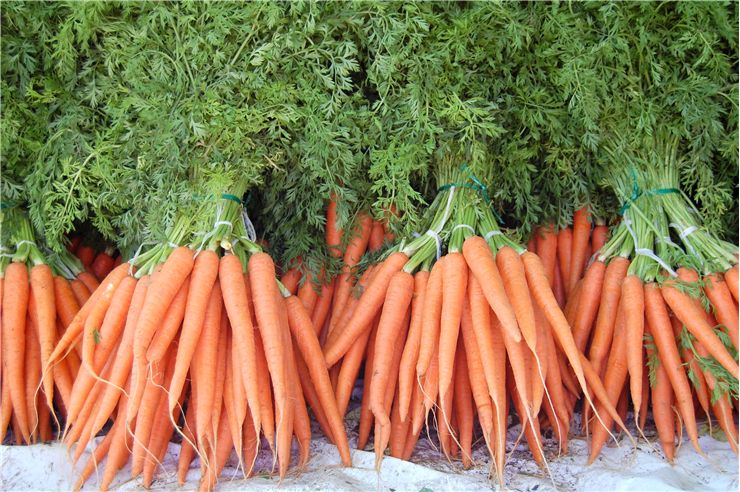History of Carrots
Carrot is a widely used root vegetable (usually orange in color) that is used all around the world as one of the most popular food ingredients. Because of their high nutrition value, presence of β-carotene, dietary fiber, antioxidants, minerals, flexibility for processing in many kinds of ways and the ability to remain edible even after months of reliable storing in both ordinary or refrigerated places, carrot instantly became embraced wherever it appeared after it was carried out from its home in Iran and Afghanistan. During its journey across centuries and continents, countless botanists managed to improve the composition, look, flavor and size of ancient carrots and produce the modern orange-colored carrot that appeared first in 17th century Netherlands.
Home of carrots and its numerous cousins can be tracked to dry and hot lands of Iran and Afghanistan. Earliest evidence of its use there was dated to 3000 BC. From there, carrot seeds were picked, carried and sold via caravans to neighboring Arabian, African and Asian lands, who all accepted carrots immediately and started crossbreeding and creating new types of this famous root. Even in those ancient times, many colors of carrots were present and used – black, white, red and purple. Interestingly, orange colors that we use today were not present. The most telling sign of how popular carrots were in those ancient times come from Ancient Egypt, where numerous carrots were placed in the tombs of dead Pharaohs and the drawings of the carrot harvest and processing can be found in numerous hieroglyph paintings. The most popular color of carrots that was cultivated in Egypt was purple, and it was used not only for eating but also for medicine.

Tradition of medicinal carrot usage moved from Egypt to Greece and Rome in 1st millennia BC. There, bitter and hard to eat carrots were used as a healing remedy for many illnesses, and was especially used as a sexual aphrodisiac (the most famous recorded instance of such use happened during the reign of Roman emperor Caligula). As for eating in regular meals, Romans were known to boil carrots and eat it with live dressings and various herbs.
By 13th century carrots traveled from Persia to Asia, reaching distant Japan. During same time, European carrot started being cultivated in gardens and fields of France and Germany. Those carrots were biter, but they were nutritious and its popularity enabled quick spread across entire Europe. In 1609, English settlers of the New World started cultivating Carrots in their first city of Jamestown, Virginia (20 years later production moved to Massachusetts. Brazil was the first South American country to receive carrots in mid-17th century, and not much later carrot arrived to Australia.
Modern yellow carrot appeared in Netherlands during 17th century as a tribute to the ruling House of Orange. After years of selective breeding, Dutch yellow carrot was engineered to be without bitterness, increased sweetness and minimal wooden core. This carrot type named ”Daucus carota” quickly became popular across entire Europe.
American cuisine did not include carrots for the longest of times. It was accepted to the American homes only after World War I when soldiers returning home brought stories and seeds of incredible French and other European cuisine which greatly help them to survive war years. Modern popularity of carrot and its presence in both savory and sweet meals can be traced to World War 2 England, where government actively encouraged home growing of carrots.
Currently, the largest producer and exporter of carrots in the world is China. In 2010, 33.5 million tons of carrots and turnips were produced worldwide, with 15.8 million tons in China, 1.3 million tons in United States, 1.3 million tons in Russia, 1 million tons in Uzbekistan and less than a million in Poland, United Kingdom and Ukraine.


